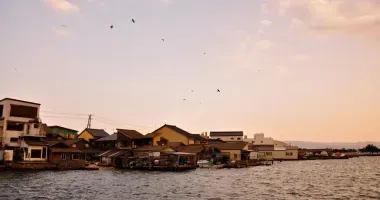Sasagawa Nagare
- Published on : 13/05/2018
- by : Japan Experience
- Youtube
Sasagawa Nagare: Sasagawa Nagare in Niigata is an area of remote coastline replete with jagged rocks, craggy cliffs, screeching seagulls, and minuscule islands just peaking above an aquamarine waterline.
Sasagawa Nagare: Northern Niigata's Incredible Coastline 笹川流れ
Greg Goodmacher
The salt producing region in northern Niigata is one small part of the jaw-dropping Sasagawa Nagare. That is the name of a stretch of curvy coastline replete with jagged rocks, craggy cliffs, screeching seagulls, and minuscule islands just peaking above an aquamarine waterline.
Isolated fishing and farming villages, aggregations of usually fewer than one hundred wind- and rain-stained grey wooden homes, sit alongside the thin and only road that accompanies the coastline. In these remote Japanese communities, a turtle can walk out of its pond and stroll down the main street without being crushed by a car. A local told me this story.
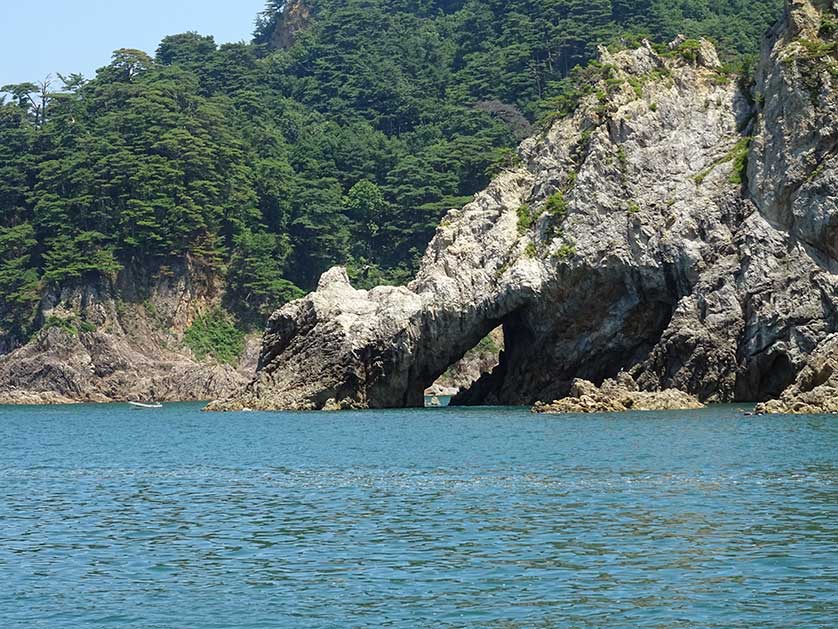
View of the Sasagawa Nagare coastline from a cruise ship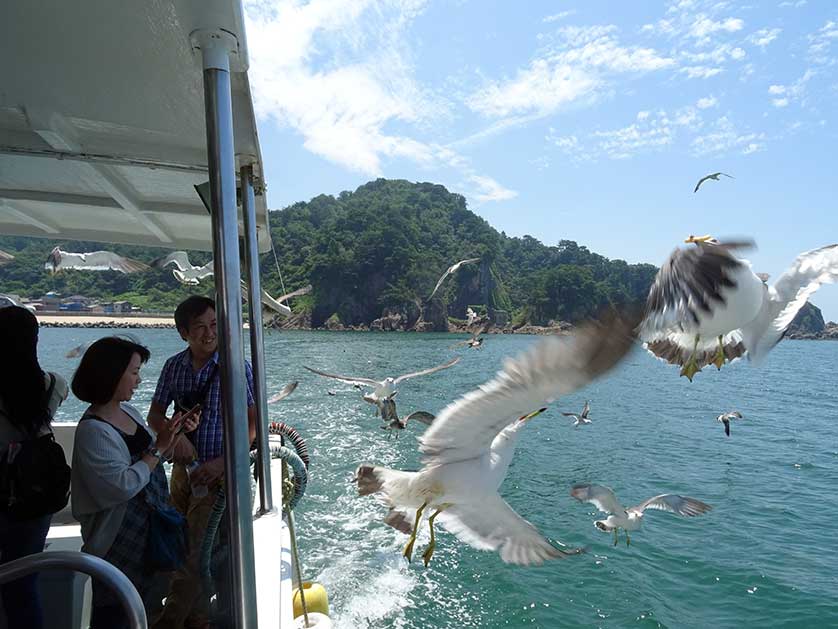
Seagulls following a cruise ship off the Sasagawa Nagare coastline
Despite the remoteness, or maybe because of the remoteness, the residents of Niigata have a special fondness for the Sasagawa Nagare. The turbulence of the sea during stormy weather, the fresh greenness of the mountain scenery, the quietness of the rural farms, and the beauty of the sunsets remind many of traditional Japanese sea country.
The name itself evokes nostalgia for locals. Sasagawa Nagare is written in Japanese as 笹川流れ. The first kanji means sasa, which is a low-growing bamboo that is prevalent in northern Niigata. Just a few generations ago, almost every Niigata family made sasadango during holidays.
They made this regional sweet by mixing glutinous rice with mugwort and sweet red beans and then wrapping them in the sasa leaves, which add flavor. Now, sasadango is a representative Niigata sweet that you can buy at most souvenir stores; few families make them at home today.
The second kanji means river. Northern Niigata has some of the cleanest rivers in Japan, and rivers have also been important for securing food and for transportation. Many regions of Japan have stories about spiritual beings and mythical creatures residing in rivers. The remaining symbols mean flow. Northern Niigata is also known for powerful currents and waves.
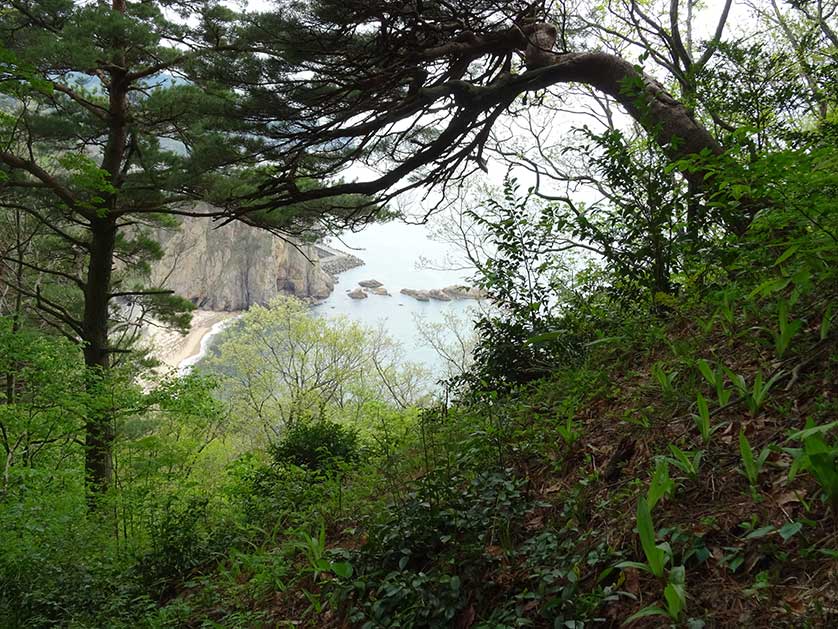
Hiking trail view of Sasagawa Nagare beach and sea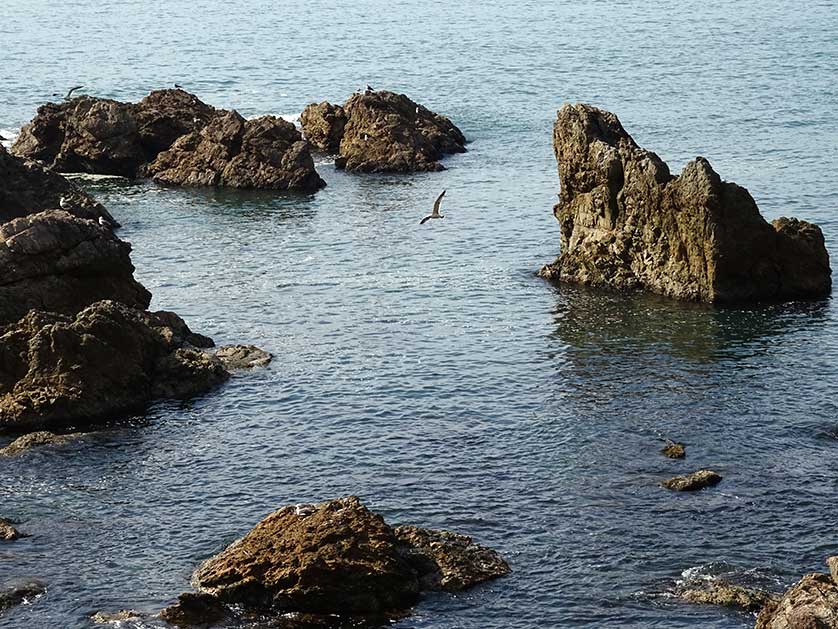
Some of the hundreds of tiny islands dotted along the Sasagawa Nagare coast
Beaches
The beaches are beautiful when driving along the coast. Unfortunately, those tides arrive with plastic trash. In summer, some of the small towns and businesses along the coast have beach cleanups, and people from many parts of inland Niigata go there to play in the sea, camp, and watch spectacular sunsets.
When the weather is fine, you can watch the sun slowly fall into the sea, and the sky explode with twilight colors. Sometimes, you can see the silhouettes of Sado Island and Awashima Island, two islands with unique geography, myths, and histories.
Mountainside cliffs in northern Niigata drop precipitously into the sea. The coastal road penetrates those cliffs with short tunnels. Winding and picturesque, the Sasagawa Nagare coast attracts photographers, pleasure drivers, ocean lovers, and long-distance cyclists. Hiking trails with great views of the coastline start and end at various villages. For specific information regarding hiking trails, the timing of the sunset, and other information stop at Yuhikaikan, a visitor center, souvenir shop, and restaurant complex along the road.
Before visiting the salt producers, I leisurely hiked a trail that starts in one fishing village, ascends several peaks with ocean views, and ends in another tiny town. Along the way, we passed two villagers who were carrying large bags of fiddlehead ferns. Inspired, I also picked a bag of these abundantly growing fresh mountain vegetables for a later meal.
Camping
Gathering mountain vegetables and seaweed are common activities for people in Niigata. And so is camping during summer. Camping sites are available at many small beaches for a few thousand yen during beach season (July to August), but I prefer to set up a tent on isolated beaches. No one has ever complained. Streams are plentiful, and a cleansing dip in a cold stream after a sea swim is refreshing. The nearby towns have few lights, so cloudless-night skies shine with brilliant stars.
One of the best ways to see the coast is from on board the Sasagare Steamboat, the name given to two small pleasure ships that cruise up and down eleven kilometers of the Sasagawa Nagare. I saw several divers descending into the transparent sea and lifting shellfish into floating buckets. Seagulls flying next to the boat picked shrimp crackers from our outstretched hands. The boat threaded its way through numerous rocky outcroppings. The powerful sea had eroded tunnels through some tiny islands.
Boats depart eleven times each day. The earliest cruise departs at 9 am, and the last leaves around 4 pm. The fare is 1,000 yen for adults and 500 yen for children. Make sure your camera has sufficient memory for all the gorgeous sights you will experience on the boat and other locations along the picturesque Sasagawa Nagare.
The Sasagawa Nagare steamboats leave from the Kuwagawa Fishing Port. Driving from Niigata city is the most convenient travel option, but you can board a local train or bus from Murakami Station to Kuwagawa Station. Check this link for schedules and other important details.
Access Getting to Sasagawa Nagare
Driving is the best option. You will be able to pull off the road freely whenever you wish. There are so many gorgeous sites that will tempt you to stop or to climb or to swim, or take pictures. From Niigata, take either the expressway or Route 7 into Murakami city, and then switch to Route 345. Once you are on Route 345, you cannot get lost. Make sure that your car is full of gas because gas stations are few and far between in this isolated section of Niigata.
By train: take the JR Uetsu Line Inaho Limited Express to Murakami from Niigata Station (47 minutes; 2,590 yen). Alternatively, a Rakuraku Train Murakami (58 minutes; 1,450 yen).
From Murakami transfer to a local train for Kuwagawa (22 minutes), Imagawa (27 minutes) and Echigo-Kangawa (32 minutes).
A Japan Rail Pass is valid on these routes.
 The ocean off the Niigata coast, Niigata Prefecture
The ocean off the Niigata coast, Niigata Prefecture



